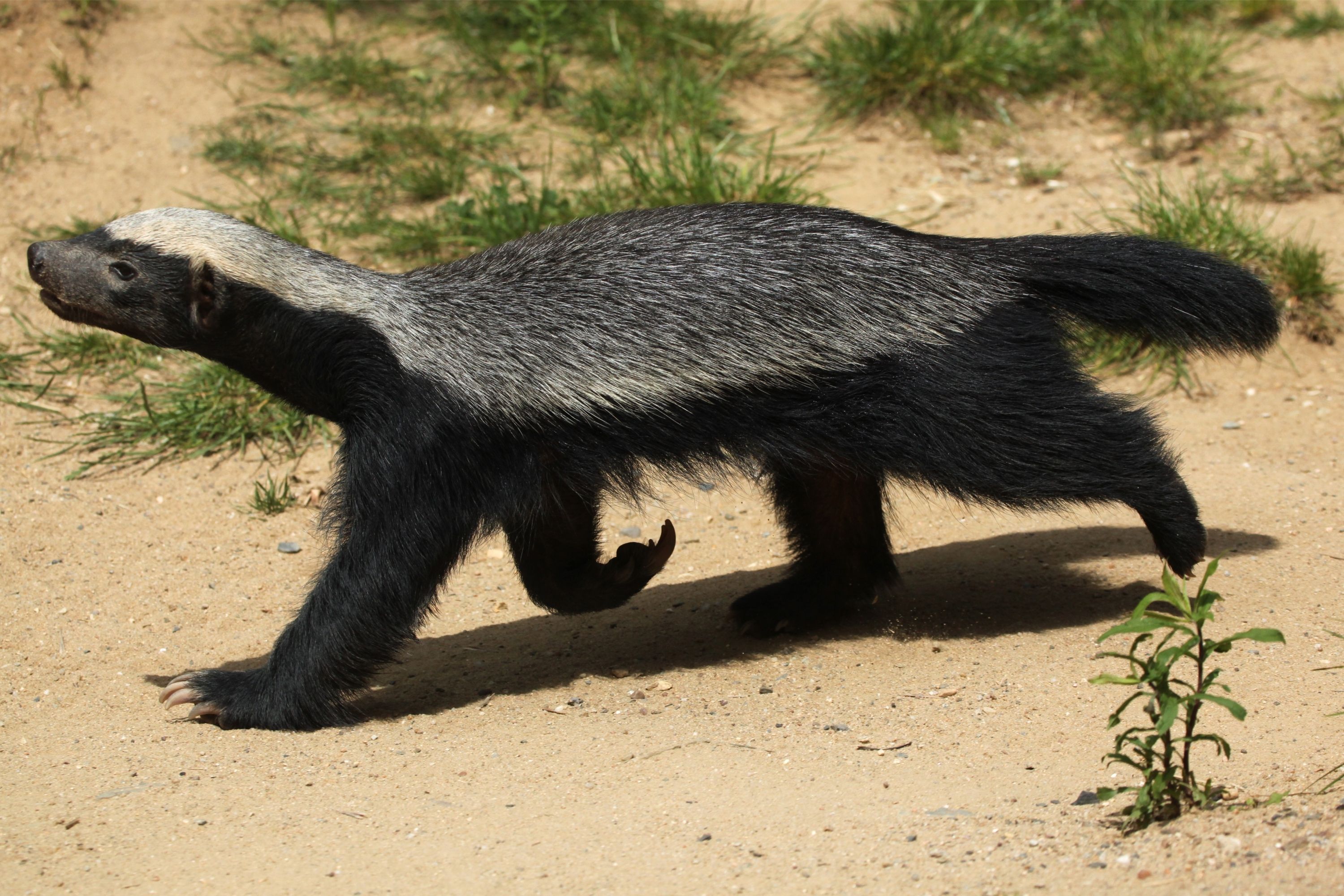Honey badger
(Mellivora capensis)

Description
The honey badger (Mellivora capensis), also known as the ratel (/ˈreɪtəl/ or /ˈrɑːtəl/), is a mammal widely distributed in Africa, Southwest Asia, and the Indian subcontinent. It is the only living species in the genus Mellivora and in the mustelid subfamily Mellivorinae. Despite its name, the honey badger does not closely resemble other badger species; instead, it bears more anatomical similarities to weasels. It is primarily a carnivorous species and has few natural predators because of its thick skin, strength and ferocious defensive abilities. The honey badger has a fairly long body, but is distinctly thick-set and broad across the back. Its skin is remarkably loose, and allows it to turn and twist freely within it. The skin around the neck is 6 millimetres (0.24 in) thick, an adaptation to fighting conspecifics.The head is small and flat, with a short muzzle. The eyes are small, and the ears are little more than ridges on the skin,another possible adaptation to avoiding damage while fighting. The honey badger has short and sturdy legs, with five toes on each foot. The feet are armed with very strong claws, which are short on the hind legs and remarkably long on the forelimbs. It is a partially plantigrade animal whose soles are thickly padded and naked up to the wrists. The tail is short and is covered in long hairs, save for below the base. There are two pairs of mammae.The honey badger possesses an anal pouch which, unusual among mustelids, is eversible,a trait shared with hyenas and mongooses. The smell of the pouch is reportedly "suffocating", and may assist in calming bees when raiding beehives. The skull bears little similarity to that of the European badger, and greatly resembles a larger version of that of a marbled polecat.The skull is very solidly built, with that of adults having no trace of an independent bone structure. The braincase is broader than that of dogs. The honey badger has the least specialised diet of the weasel family next to the wolverine.It accesses a large part of its food by digging it out of burrows. It often raids beehives in search of both bee larvae and honey. It also feeds on insects, frogs, tortoises, turtles, lizards, rodents, snakes, birds and eggs. It also eats berries, roots and bulbs. When foraging for vegetables, it lifts stones or tears bark from trees. Some individuals have even been observed to chase away lion cubs from kills.
Taxonomic tree:







